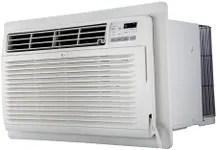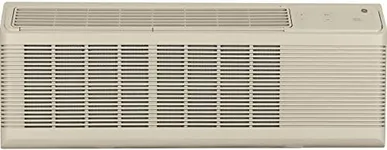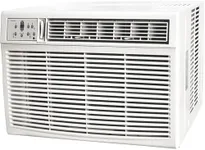Buying Guide for the Best Through Wall Air Conditioning Units
Choosing the right through-wall air conditioning unit can make a significant difference in your comfort and energy bills. These units are designed to be installed through an exterior wall, providing a permanent cooling solution without taking up window space. When selecting a through-wall air conditioner, it's important to consider several key specifications to ensure you get the best fit for your needs. Understanding these specs will help you make an informed decision and find a unit that meets your cooling requirements efficiently.Cooling Capacity (BTUs)Cooling capacity, measured in British Thermal Units (BTUs), indicates the amount of heat an air conditioner can remove from a room per hour. This spec is crucial because it determines how effectively the unit can cool your space. Units with lower BTUs (5,000-8,000) are suitable for small rooms up to 350 square feet, medium BTUs (8,000-12,000) are ideal for rooms between 350-550 square feet, and higher BTUs (12,000-18,000) are best for larger rooms or open spaces up to 1,000 square feet. To pick the right one, match the BTU rating to the size of the room you want to cool. An undersized unit will struggle to cool the space, while an oversized unit will cycle on and off too frequently, wasting energy.
Energy Efficiency Ratio (EER)The Energy Efficiency Ratio (EER) measures the efficiency of the air conditioner by comparing the cooling capacity (BTUs) to the power input (watts). A higher EER indicates a more efficient unit, which can save you money on energy bills. EER values typically range from 8 to 12. For better energy savings, look for units with an EER of 10 or higher. If you plan to use the air conditioner frequently, investing in a higher EER unit can be more cost-effective in the long run.
Dimensions and Wall Sleeve CompatibilityThe dimensions of the air conditioning unit and its compatibility with a wall sleeve are important for proper installation. Wall sleeves are metal or plastic frames that support the unit and protect it from the elements. Ensure the unit's dimensions match the existing wall sleeve or purchase a compatible sleeve if installing a new unit. Measure the wall opening carefully and check the manufacturer's specifications to avoid installation issues. Choosing the right size ensures a secure fit and optimal performance.
Noise LevelNoise level, measured in decibels (dB), indicates how loud the air conditioner will be during operation. This is important for maintaining a comfortable and quiet environment, especially in bedrooms or living areas. Units typically range from 50 to 60 dB. For a quieter experience, look for units with noise levels below 55 dB. Consider where the unit will be installed and how sensitive you are to noise when making your choice.
Additional FeaturesAdditional features can enhance the functionality and convenience of your air conditioner. Common features include remote control, programmable thermostat, sleep mode, energy saver mode, and adjustable fan speeds. These features can provide greater control over the unit's operation and improve comfort. Think about which features are important to you and how they will fit into your daily routine. For example, a programmable thermostat can help you save energy by automatically adjusting the temperature when you're not home.














